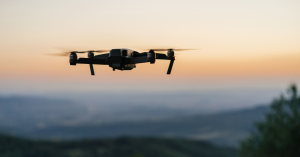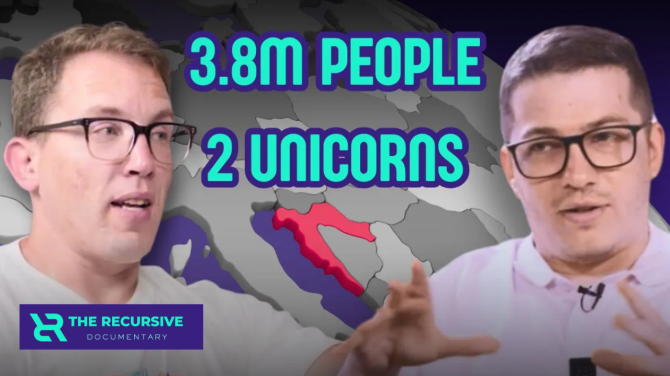“Europe is not ready to defend itself,” warns Kate McKenna, a strategic consultant for Ukraine’s defense and intelligence sector. Her analysis first appeared in The Recursive’s editorial topic “Europe Is Preparing for War to Keep the Peace” in the report State of defense and cybersecurity tech in CEE. We publish her commentary in full, for its depth and urgency. Appointed by senior Ukrainian defense leadership to secure advanced weapons, cyber technologies, and funding, McKenna assesses security frameworks and identifies critical technology gaps.
In her analysis, McKenna outlines priorities for Europe’s defense: faster modernization, deeper military coordination with Ukraine, and a security framework capable of responding to contemporary challenges.
TR: How do you assess Europe’s current readiness to deter or respond to large-scale conflicts?
Europe is not prepared or ready to defend itself. The defense procurement processes in the West, particularly in Germany, are flawed and not operating at the required pace. It is limited to Primes and lacks the innovative dynamism needed to create a modern warfare-ready military. Also, Europe has outdated security frameworks and is slow to adapt to emerging technologies like drones and AI. Besides, we see how NATO’s Article 5 and traditional defense mechanisms will not be effective in responding to rapid, high-tech threats.
Germany’s military lacks adequate air defenses against Russian hypersonic missiles, which could neutralize key infrastructure in Berlin or elsewhere in minutes. Poland, a NATO frontline state, has a robust military (over 200,000 active personnel and modernized equipment) and would likely mount significant resistance. However, Poland is the only European NATO member capable of a decent defense. While NATO’s rapid reaction forces (Very High Readiness Joint Task Force) can deploy within days, full mobilization of NATO’s 3.5 million troops would take weeks to months.
5 specific issues
Insufficient Preparedness: Europe has not fully adapted to the new realities of modern warfare, as starkly demonstrated by the Russia-Ukraine war. European nations have been slow to recognize the transformed nature of military threats, particularly the role of advanced technologies such as drones, artificial intelligence, and integrated battlefield systems.
Outdated Security Framework: The existing European security architecture, which relies on traditional guarantees such as NATO’s Article 5, is losing credibility in the face of new global challenges. The war in Ukraine has exposed vulnerabilities in collective defense mechanisms, as old systems are not equipped to counter the rapid evolution of warfare.
Urgent Need for Adaptation: Europe must urgently modernize its defense capabilities to keep pace with the technological and strategic shifts seen in Ukraine. Future wars will be won by those who can innovate and adapt quickly. Europe risks falling behind if it does not act decisively.
Ukraine as a Model and Shield: Ukraine is a critical example for Europe. Its battle-hardened experience and rapid adaptation to high-tech warfare point the way forward. Europe should learn from Ukraine’s ability to innovate under pressure and integrate new technologies into its defense strategy. Ukraine is the shield for Europe, protecting it from authoritarian powers like Russia, which underscores the need for Europe to bolster its own defenses to share this burden. It must also pay for Ukraine to defend — it is unfair to expect a war-ravaged, poor country to shoulder so much of the global security burden.
Call for a New Security Architecture: We need a new European security framework that incorporates Ukraine as a key player, given its practical experience and military resilience. Without significant changes, Europe may not be adequately prepared to counter emerging threats from aggressive powers like Russia, China, North Korea, or Iran.
What are the critical technological gaps Europe needs to address in its defense?
Unfortunately, Europe has a significant share of military systems from before 1990, including 50% of land systems and 80% of land- based air systems, which limits operational effectiveness. Its R&D investment is far lower than the US, with a €120 billion gap in 2023. Fragmented procurement leads to high costs and interoperability issues, with Europe relying on external suppliers for over 75% of its defense acquisitions in recent years. Ultimately, Europe lags in drones, cyber defense, and space technologies, which are essential for modern warfare.
In my first career, I was a structured derivative expert in capital markets. I leveraged derivatives to mitigate geopolitical and capital market risks for sovereign entities, hedge and real fund managers, international treasuries, and others. I have a solution for Europe and a way to assist Ukraine. One of the issues Europe faces when purchasing new technologies, such as drones, is that these systems are rapidly evolving, meaning a drone purchased today will likely be obsolete in six months’ time. Additionally, it is impossible to build a robust technology without testing it on the front lines. China, Iran, and North Korea are all learning and testing on Ukrainian soil. I suggest that derivatives can provide Europe with up-to-the-minute military technology when it needs it, and Ukraine gains the immediate funding it needs to defend itself and Europe.
Identified technological gaps
Europe’s defense capabilities face several critical shortcomings:
-
- Outdated Equipment: Large portions of inventory date back before 1990, including 50% of land systems, 80% of land-based air systems, 40% of mine warfare/amphibious vessels, 50% of submarines, and 35% of air systems.
- R&D Investment Gap: Nearly €120 billion behind the US in 2023, with low defense R&D share (peaking at 4% in 2021). Underinvestment slows progress in AI, quantum tech, and integrated battlefield systems.
- Fragmented Procurement: Multiple small markets and low joint purchasing cause high costs and interoperability issues (e.g., 10 howitzer types sent to Ukraine vs. one from the US). Estimated inefficiency costs: €25–100 billion annually.
- Low Production Capacity: Europe struggles to scale output — Russia produces up to 1,500 tanks annually; Europe lags far behind.
- Technological Lag: Gaps in aircraft, helicopters, drones, ammunition, ISR, integrated air/missile defense, space awareness, cyber defense, and maritime protection.
- Dependency on External Suppliers: Over 75% of EU defense acquisitions since 2022 came from outside the EU (63% from the US), risking strategic autonomy.
What strategies have you found most effective in countering disinformation that undermines Ukraine and broader European security efforts?
Once the disinformation tap is turned on, any counter to it is like screaming into a raging thunderstorm. There are strategies and tactics that have some impact, like fact-checking and debunking. But that relies on people being open to and curious about the information they’ve just absorbed. Unfortunately, those who are targeted by these information warfare campaigns are often the least likely to visit a Fact-Checking site or read a media post debunking the narrative.
Ukraine’s population, after over 11 years of fighting Russia across all warfare domains, is a media-savvy and resilient population. That is not true of Europeans. Ukraine has a well-established disinformation-fighting machine, and citizens who debunk and question information before adopting it as fact.
But even Ukrainians fall victim sometimes, I know that the Russians are succeeding when I feel the edge of weariness, and the energy leaves the room.
Finland has created successful programs which have built long-term resilience against disinformation, empowering individuals to resist false narratives. Ukraine’s use of social media updates, and cybersecurity measures protecting critical infrastructure have been crucial in preempting and countering disinformation. International efforts like the EU’s Action
Plan Against Disinformation, and legal measures like the Digital Services Act, are vital for coordinating responses and holding platforms accountable, though their impact remains weak.
Why should disinformation be formally recognized as a domain of warfare?
The only truly effective way to fight disinformation is to first acknowledge it as a domain of warfare. This recognition is essential. By treating disinformation as a form of warfare, we can integrate counter-efforts into military strategies, enhance coordination, and apply military solutions to defend against this insidious weapon of mass destruction.
The recent India–Pakistan conflict illustrates the dangers. According to The Guardian, information warfare played a significant role in escalating tensions between two nuclear-armed countries. Analysts describe this as evidence of a new digital frontier in warfare, where tactical misinformation is deployed to manipulate narratives and heighten conflict. Fact-checkers noted that tactics — such as repurposing old footage and spreading false claims of military victories — mirrored patterns seen in the early days of the Russia–Ukraine war.
The Washington DC-based Centre for the Study of Organized Hate (CSOH), which monitored misinformation from both sides, warned that the weaponisation of misinformation in the India–Pakistan conflict was “not an isolated phenomenon, but part of a broader global trend in hybrid warfare.”
Raqib Hameed Naik, CSOH’s executive director, called it “a pretty catastrophic failure” on the part of social media platforms to moderate and control the scale of disinformation. Of the 427 most concerning posts CSOH examined on X (some reaching nearly 10 million views), only 73 had warning labels. X did not respond to requests for comment.
Recognizing disinformation as a domain of warfare would justify integrating counter-disinformation measures with military and intelligence operation, delivering a coordinated, cross-domain response as envisaged in NATO’s Hybrid Warfare framework. This could involve combining cyber, information, and military operations to counter hybrid threats, much like Ukraine has done by targeting Russian communication infrastructure.
Such recognition would also support a more assertive stance under international law, including self-defense against hybrid attacks involving disinformation. It would encourage greater funding and resources for counter-disinformation initiatives, treating them with the same urgency as traditional military operations — as reflected in the EU’s increased budget for East StratCom in 2025.








